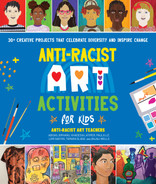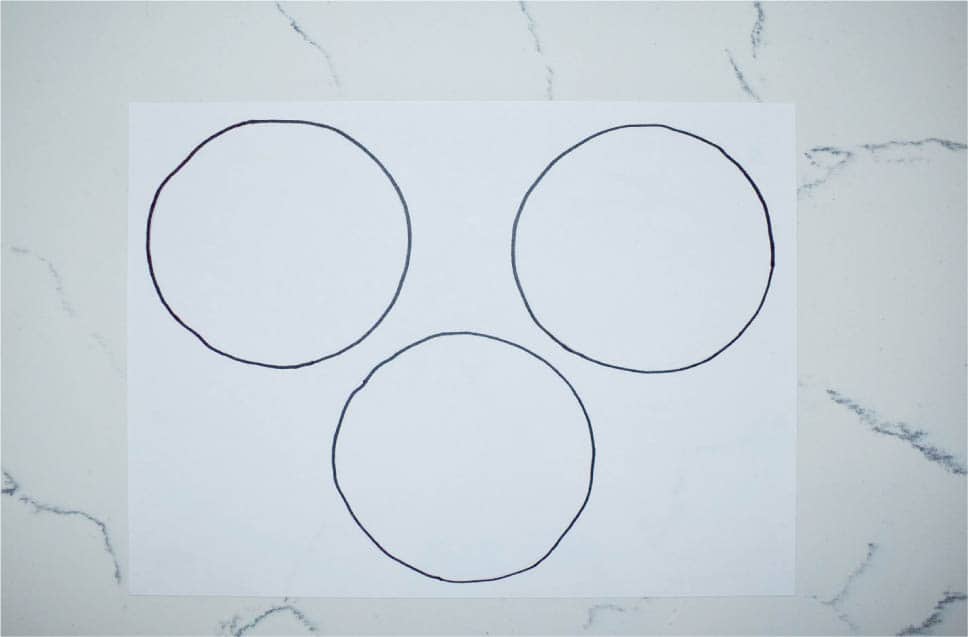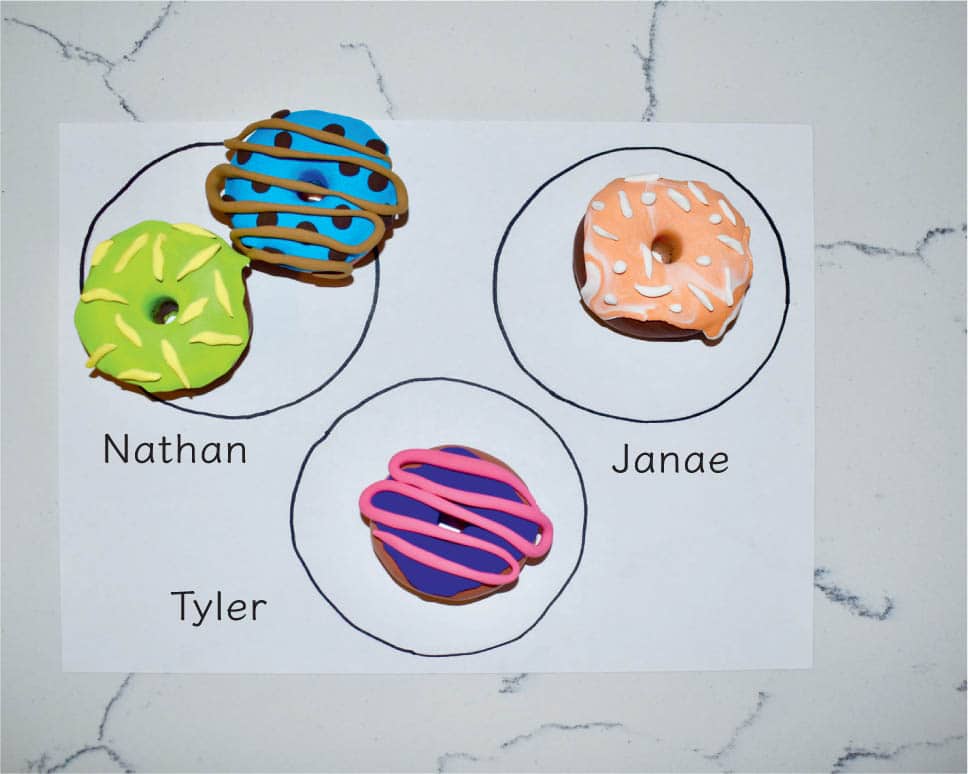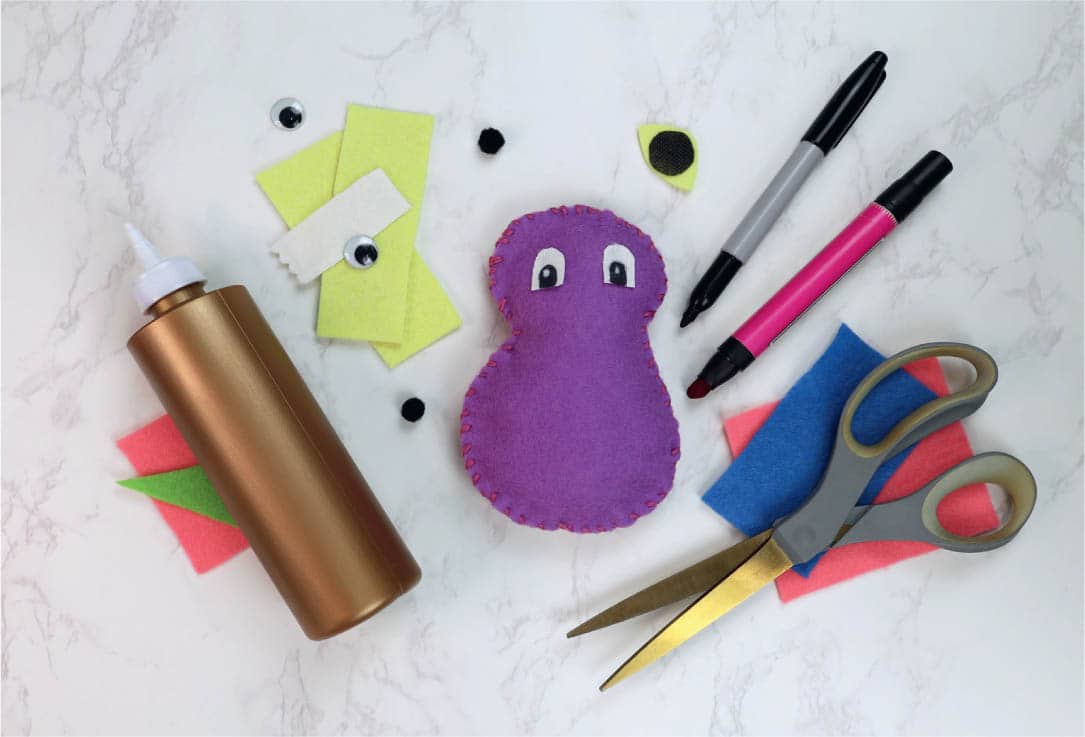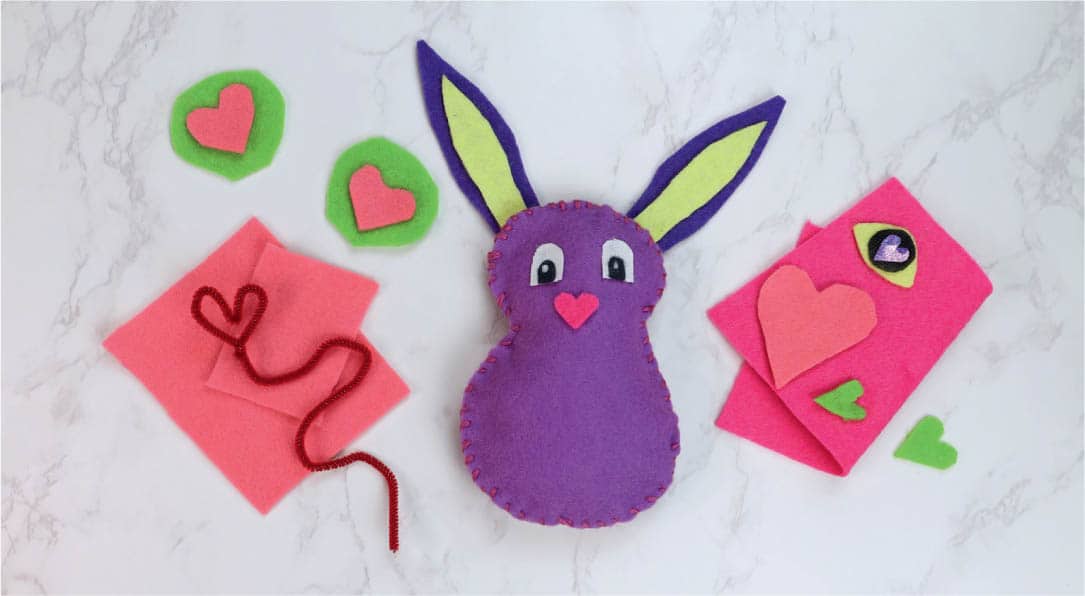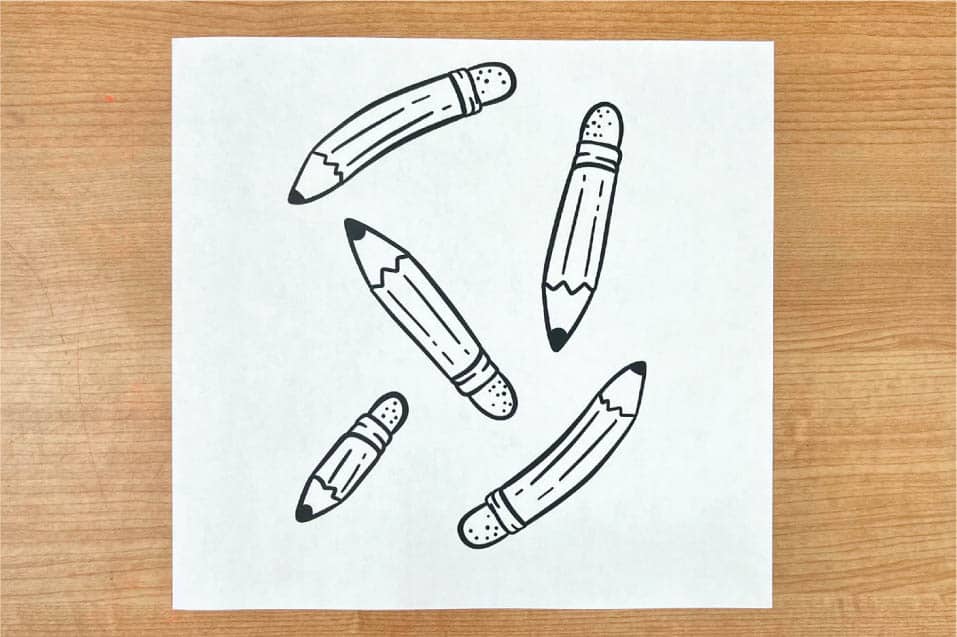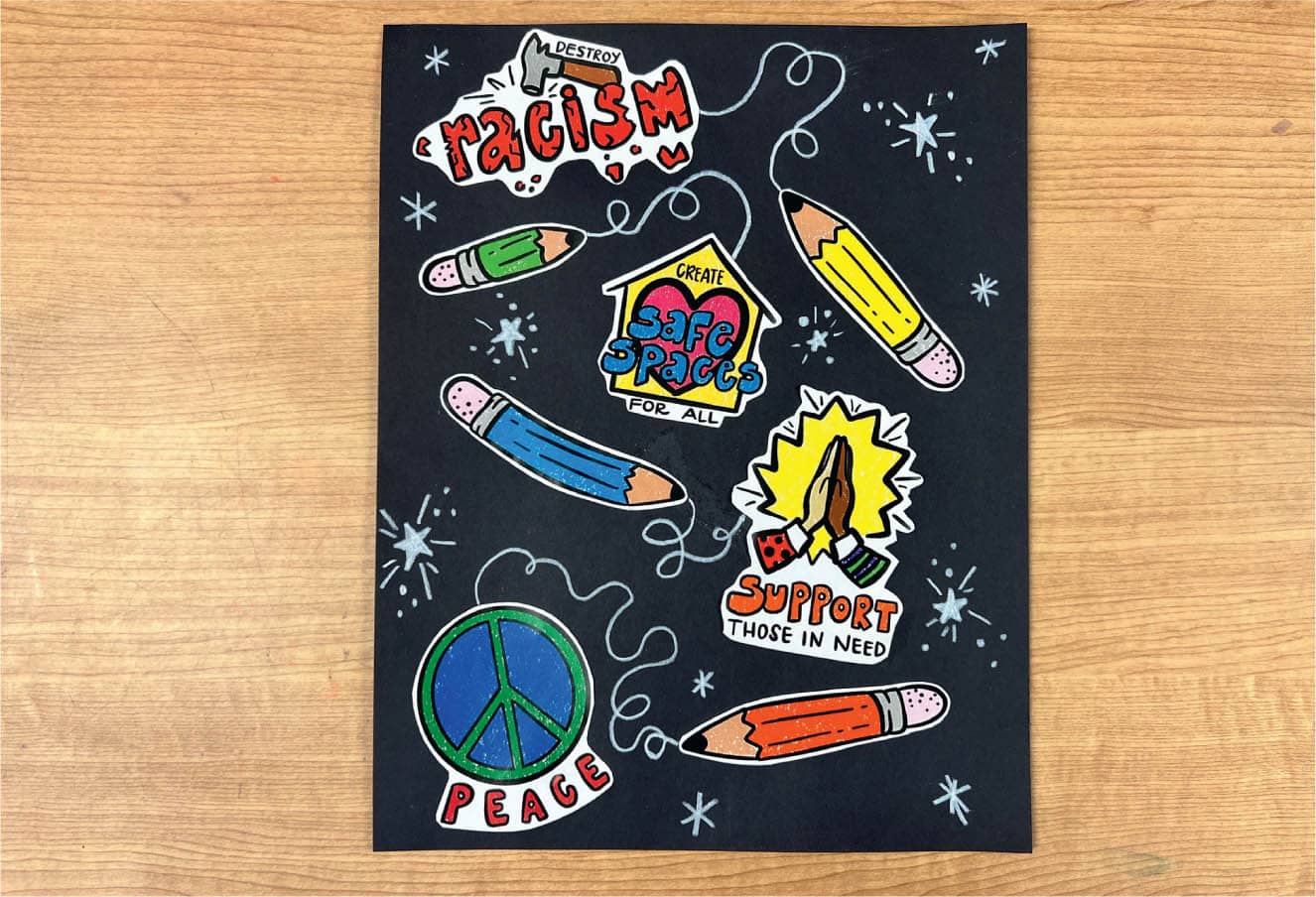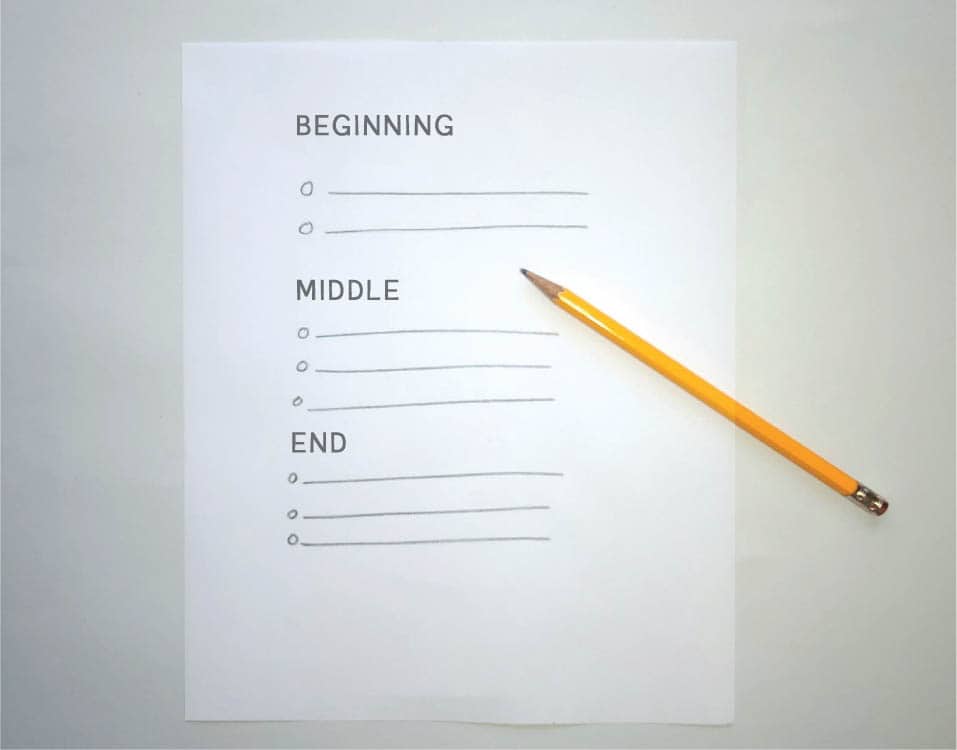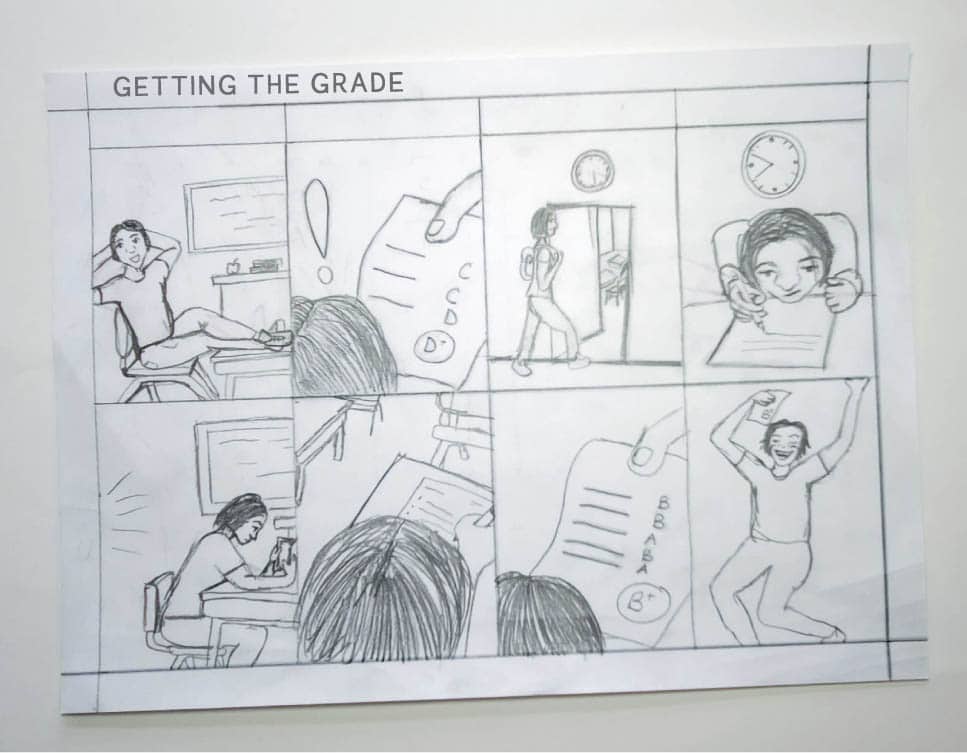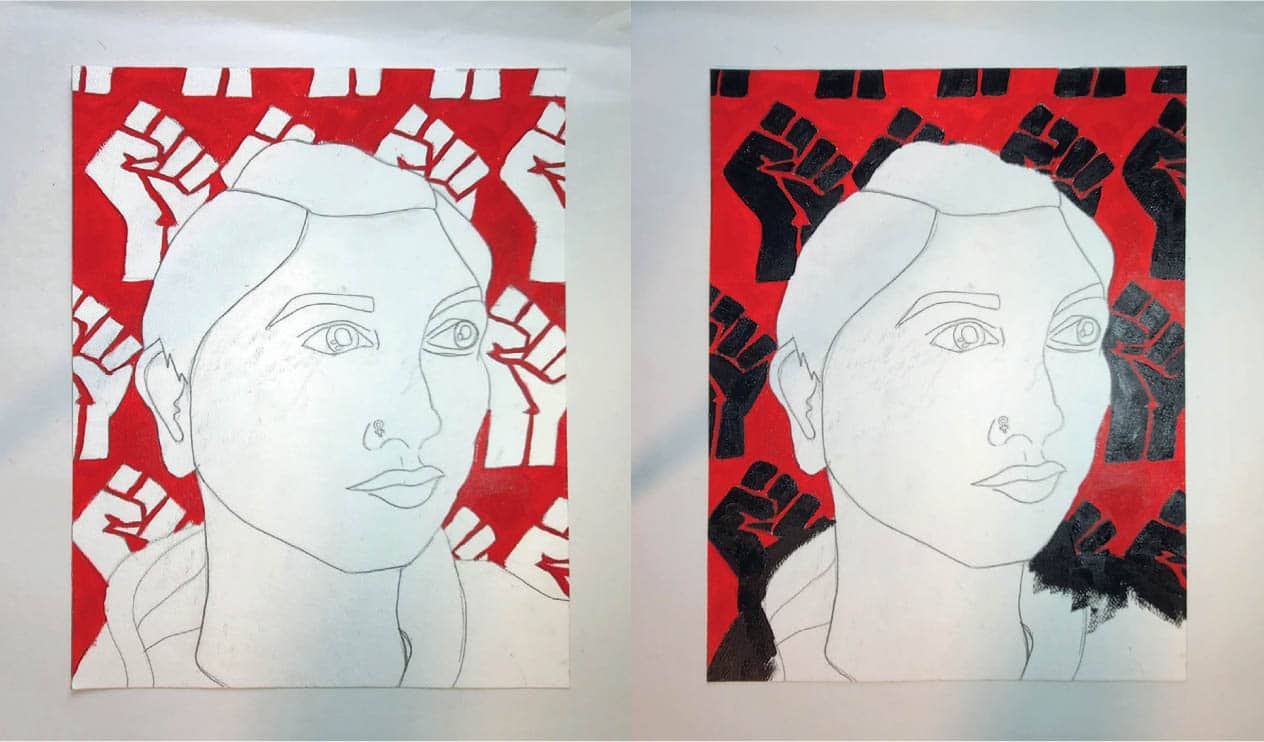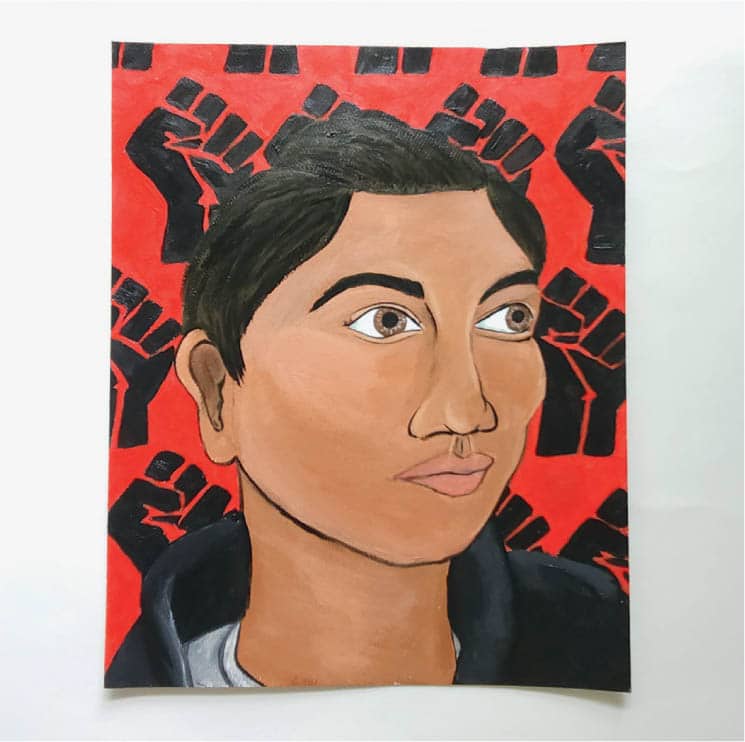In this chapter, you will work on activities and projects that revolve around empathy. Empathy is when you recognize how and why others may feel a certain way, whether you feel that way or not. When you have empathy, you can understand and respect the world around you better. Racism is rooted in self-interest and the desire to have and maintain power. To counteract that, you can feel and show empathy for how you and others are affected by injustice, bias, and racism. This chapter will help you empathize with how different people, cultures, and communities are treated today and throughout history. Later in this book, you will learn how empathy can be a motivation to make a change and become an activist.
This chapter will help you build empathy. By completing these art activities, you will find new ways to connect and find similarities with people different from you by experiencing empathy. These activities will help you understand and explain how bias and racism have shaped people, cultures, and communities so you can empathize with others in your life.
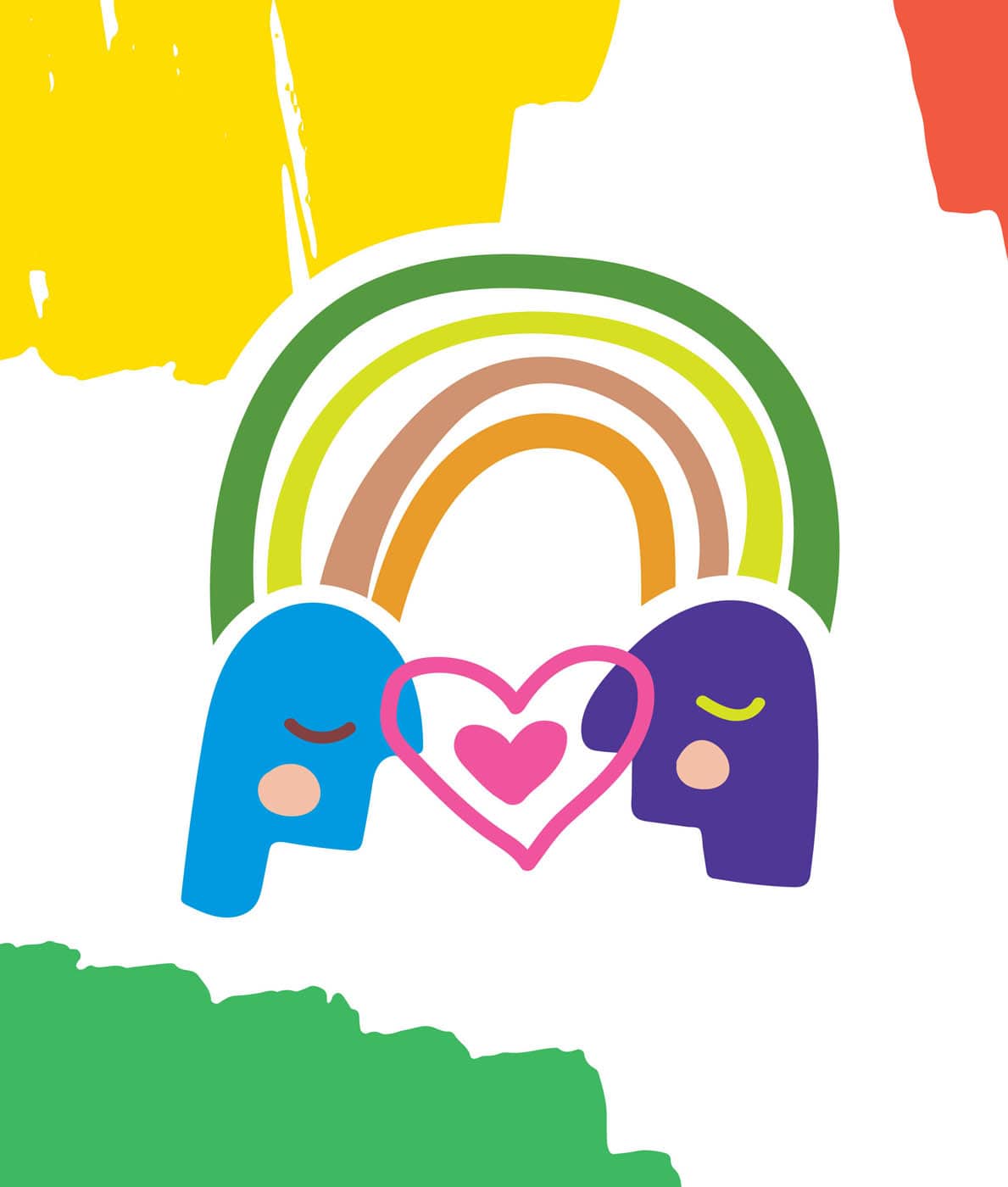
Have you heard of the golden rule? The golden rule is to treat others the way you want to be treated. However, the platinum rule means treating others the way they want to be treated. Because everyone is different, we have different reactions to different things. For example, some people like a hug when they feel sad, while others may like to be left alone. Empathizing with someone who thinks differently may be more challenging than empathizing with someone who thinks and reacts just as you do. However, it is important to remember that just as we do not want to be told how to feel and be treated, we should not tell others how to feel and be treated. The golden rule leads us to think about how we can act on empathy. Empathy in action is called compassion. Although it is important that we understand the feelings of others in a way that makes them feel heard and seen, it is important to act on our empathy by helping those hurting. Activists are a great example of what it looks like to move from empathy to action so we can change those things that hurt others.

THE PLATINUM RULE
make a welcoming entrance and explore how to create brave spaces. Through empathy, we can create brave and inviting spaces that welcome all. Brave spaces are communities where people respect one another and hold each other accountable. They do not tolerate bias, racism, or any other form of hate or harm. Brave spaces embrace differences and allow the opportunity to understand diverse perspectives and cultivate connections. 1. Think of a place you feel welcome. This place is a space where you feel respected and understood. It could be a classroom, community center, a friend’s place, or even your own home. Draw the entrance to that place. 2. Think about why you feel welcome in that space. Around your entrance, draw the people and things that make you feel accepted there. Fig. 1 3. Use crayons, colored pencils, or markers to add color to your entrance. Fig. 2 Fig. 2: Add color. 4. On a separate sheet of paper, design and cut out an inviting door. Fold the edge and glue or tape it onto your entrance. Fig. 3 Fig. 3: Create a door and glue it onto paper. 5. Use tape to attach your work to a wall or box. Fig. 4 Fig. 4: Attach to a wall or box. 6. Think about how you can make others feel welcome. Add inviting details that will make all feel welcome and appreciated. Fig. 5 Fig. 5: Add inviting details. 7. Think about how you can transform a welcoming space into a brave space. Consider having a community conversation to answer the following questions: Extension activity: Create a welcoming sign to display near the entrance of your home, school, or other community space.WE WELCOME ALL


MATERIALS
IN THIS ACTIVITY, YOU WILL

WHY THIS MATTERS
LET’S GET STARTED!
learn the meaning of equity by solving real-world math problems with art. Equal is not always fair. Fairness or equity means everyone gets what they need, and not everyone always gets the same thing. For example, imagine an Olympic athlete and a toddler sharing a pizza. Would it make sense for them to split the pizza in half? A toddler cannot fit half a pizza in their stomach because they are too small. Meanwhile, an Olympian needs to feed their body to keep up with the training and exercise required to be a star athlete. 1. Read the story problem below. At recess, there are four leftover donuts from breakfast in the classroom. Nathan and Janae always come to school with two snacks, but Tyler never has a snack from home and feels hungry. All three friends want the extra donuts. How should the snacks be shared? How much will each friend get? 2. Draw a plate for each of the three friends on a piece of paper. Fig. 1 Fig. 1: Draw three circles to represent plates. 3. Create the four donuts using modeling clay. Begin by rolling a piece of brown clay into a ball. Use your thumb or a marker to poke a hole in the center. Use clay in other colors to add the frosting, sprinkles, and other details. Fig. 2, Fig. 3 Fig. 2: Roll the brown modeling clay into a ball and poke a hole; make sprinkles and frosting. 4. Label each plate with a friend’s name. Give out the food in a way you feel is fair. You can carefully use a plastic knife to cut the donuts. Fig. 4 Fig. 4: Label each plate with a friend’s name. 5. Answer the story problem from step 1: “How much snack does each friend get?” in a way that makes sense to you. Write your answer in fraction form. Two examples of possible equitable answers are: “Each friend will get ½ of a donut, but Tyler would get 1½ donuts.” Or “Each friend will get one donut, but Tyler will get 2 donuts.” How does your answer show equity/fairness over equality? Did every friend get the amount of donut they need to do their best learning at school? Fig. 5, Fig. 6 Fig. 5: Give out the food fairly. Label how much each friend gets. Thirds Fourths Fig. 6: Use the diagram if you need a refresher on fraction form. 6. Create a story problem to solve and share it with a friend! Here is an example of a story problem sentence frame: “____ friends want to share ____ (foods). However, ____ friends are hungry, while the rest have already eaten. How can you share the food fairly?”EQUAL ISN’T ALWAYS FAIR

MATERIALS
IN THIS ACTIVITY, YOU WILL

WHY THIS MATTERS
LET’S GET STARTED!
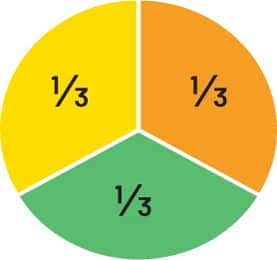
⅓+⅓+⅓=1
¼+¼+¼+¼=1
create a stuffed critter that represents four qualities of compassion. Empathy is important because racism is rooted in self-interest and the desire to have and keep power. But to be anti-racist, we need more than just empathy. We need to have compassion. Compassion is caring for the needs of others and taking action to help them. In this activity, we will explore four qualities of compassion: 1. Observe: Compassionate people see and notice when someone may need help. 2. Understand: Compassionate people take the time to listen and know someone’s point of view. 3. Connect: Compassionate people build relationships and find commonalities even with those who are different from them. 4. Act: Compassionate people take action. When they see someone is hurting, they ask how they can help and take action without expecting anything in return. 1. Begin by drawing a shape for the body of your compassion critter onto a piece of felt or fabric. 2. Carefully cut out the body and place it onto another piece of felt or fabric. Trace the body and cut the second piece. Fig. 1 Fig. 1: Cut out the shapes for the body. 3. Place both pieces of fabric on top of one another. Sew along the edges, leaving a 1-inch (2.5 cm) opening. If you cannot sew, you can use hot glue or fabric glue instead. 4. Fill the body with cotton batting or fiberfill. Sew or glue the opening shut. Fig. 2 Fig. 2: Sew and stuff the body. 5. Look back to the first quality of compassion. Add eyes or another symbol to remind you to observe and notice when someone may need help. Fig. 3 Fig. 3: Add eyes or another symbol to remind you to observe and notice when someone may need help. Use fabric, markers, or paints to add this and the remaining qualities. 6. Look back to the second quality of compassion. Add ears or another symbol to remind you to understand and listen to someone’s point of view. Fig. 4 Fig. 4: Add ears or another symbol to remind you to understand and listen to someone’s point of view. 7. Look back to the third quality of compassion. Add a heart or other symbol to remind you to connect with people and build relationships. Fig. 5 Fig. 5: Add a heart or other symbol to remind you to connect and build relationships. 8. Look back to the fourth quality of compassion. Add limbs or another symbol to remind you to take action when you see someone is hurting. Fig. 6 Fig. 6: Add limbs or another symbol to remind you to take action. 9. Complete your stuffed critter and use it to remind you of the importance of compassion. Know that there are many things you can do to help those around you, both big and small. Here are some examples: Smaller Actions: Holding the door open for someone carrying bags, including a shy classmate in a game at recess, offering to shovel snow for an older neighbor, or speaking up when you hear a racist remark and providing comfort to those impacted. Bigger Actions: Donating clothes and toys to a local shelter, providing meals for those experiencing hunger, buying school supplies for a child in need, or encouraging your board of education to adopt an anti-racist curriculum. Whenever you look at your compassion critter, think about how you can observe needs, understand feelings, build connections, and take action to help others. You can also consider giving your compassion critter to someone who needs comforting.COMPASSION CRITTERS
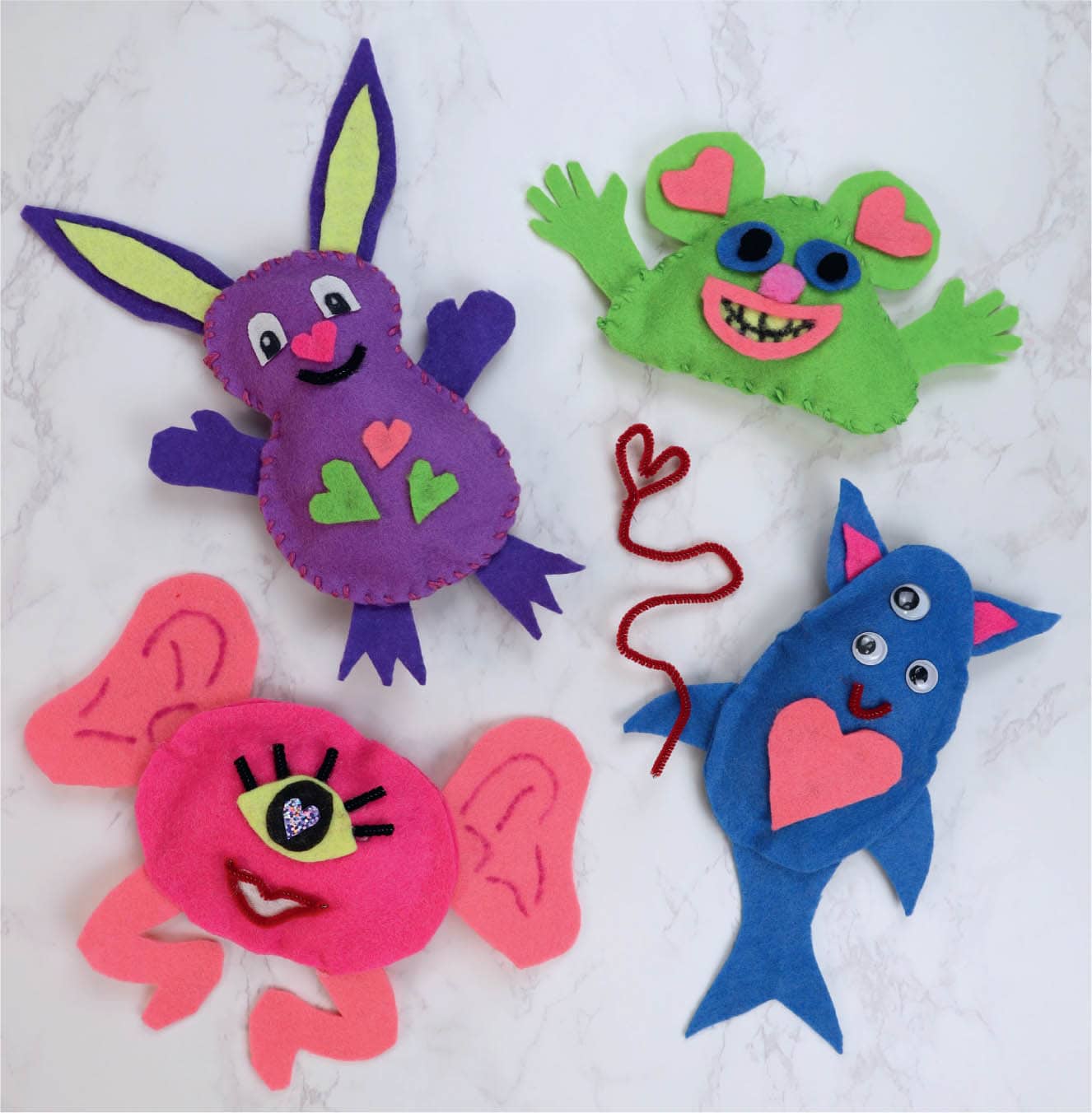

MATERIALS
IN THIS ACTIVITY, YOU WILL

WHY THIS MATTERS
LET’S GET STARTED!
create a collage that illustrates the change you wish to see in the world. It is important to understand that people receive certain privileges, opportunities, and experiences while others do not. Empathy is necessary because it allows us to notice these differences and understand how they affect the lives of others. Empathy allows us to look into the lives of others and gain a better understanding of how they experience life. 1. To create a better world, we first need to envision it. In this activity, you will imagine that you have a pencil that could magically draw things into the world. Begin by drawing those magical pencils on a piece of paper. Fig. 1 2. Use crayons, paint, or colored pencils to add color to your magical pencils. Fig. 2 Fig. 2: Add color. 3. Cut out the pencils and glue them to a piece of black construction paper. Fig. 3 Fig. 3: Cut out and glue the magical pencils. 4. Think about the issues currently affecting your community and the world. Fig. 4 Fig. 4: Illustrate the changes you wish to see in the world. What would you magically draw into the world to help resolve issues you have noticed? Draw your illustrations on a separate sheet of paper. Label each image with a word or phrase that supports the message. Activists all around the world have shared their stories to advocate for change. When others empathize with them, they feel encouraged to help. Once we learn to empathize, we must do our part to use our voice and actions to help create a just world for us all. 5. Cut out your illustrations and glue them to your black construction paper. Fig. 5 Fig. 5: Cut out and glue your illustrations. 6. Using a white colored pencil, draw lines connecting the pencils’ tips to the illustrations. Add magical details such as stars, dots, and other designs. Fig. 6 Fig. 6: Add magical details. Use your artwork to remind us how we can use empathy to help advocate for change.DRAWING OUR DREAMS

MATERIALS
IN THIS ACTIVITY, YOU WILL

WHY THIS MATTERS
LET’S GET STARTED!
create a comic strip that illustrates a challenge over which you triumphed. We all go through journeys that include challenges and triumphs. A triumph is a victory or success. Sometimes those challenges can be unfair treatment we experience because of aspects of our identity. Reflecting on those challenges is an important part of overcoming them and understanding what others may be experiencing. We can relate to others’ struggles by acknowledging our own, which helps us empathize and help others when they experience similar challenges. 1. Think about a time when you experienced a challenge. What steps did you take to overcome that challenge? Create an outline of the challenge you experienced. Include two to three things that happened at the beginning, middle, and end of your journey. Fig. 1 2. A comic strip is a visual way of telling a story that puts events in order using boxes. Create a box for each part of the journey from your outline. The boxes should be the same size. Use a ruler to measure and draw your comic strip boxes. Fig. 2 Fig. 2: Use a ruler to create your comic strip. 3. Inside each box, draw yourself, the main character, experiencing each step of your journey. Include details in the background to create the setting. You can also add thought or speech bubbles to capture the emotions you felt during each part of your journey. Fig. 3 Fig. 3: Draw your journey. 4. Add color using coloring materials. Fig. 4 Fig. 4: Add color. 5. Share your journey comic with family and friends and discuss overcoming challenges. You can even collaborate with others to create a comic book about the challenges you have all overcome. Your book will show how common it is for people to experience challenges and capture different strategies to overcome them. Sharing our challenges and triumphs can help us empathize and help others as they experience similar challenges.CHALLENGES TO TRIUMPHS
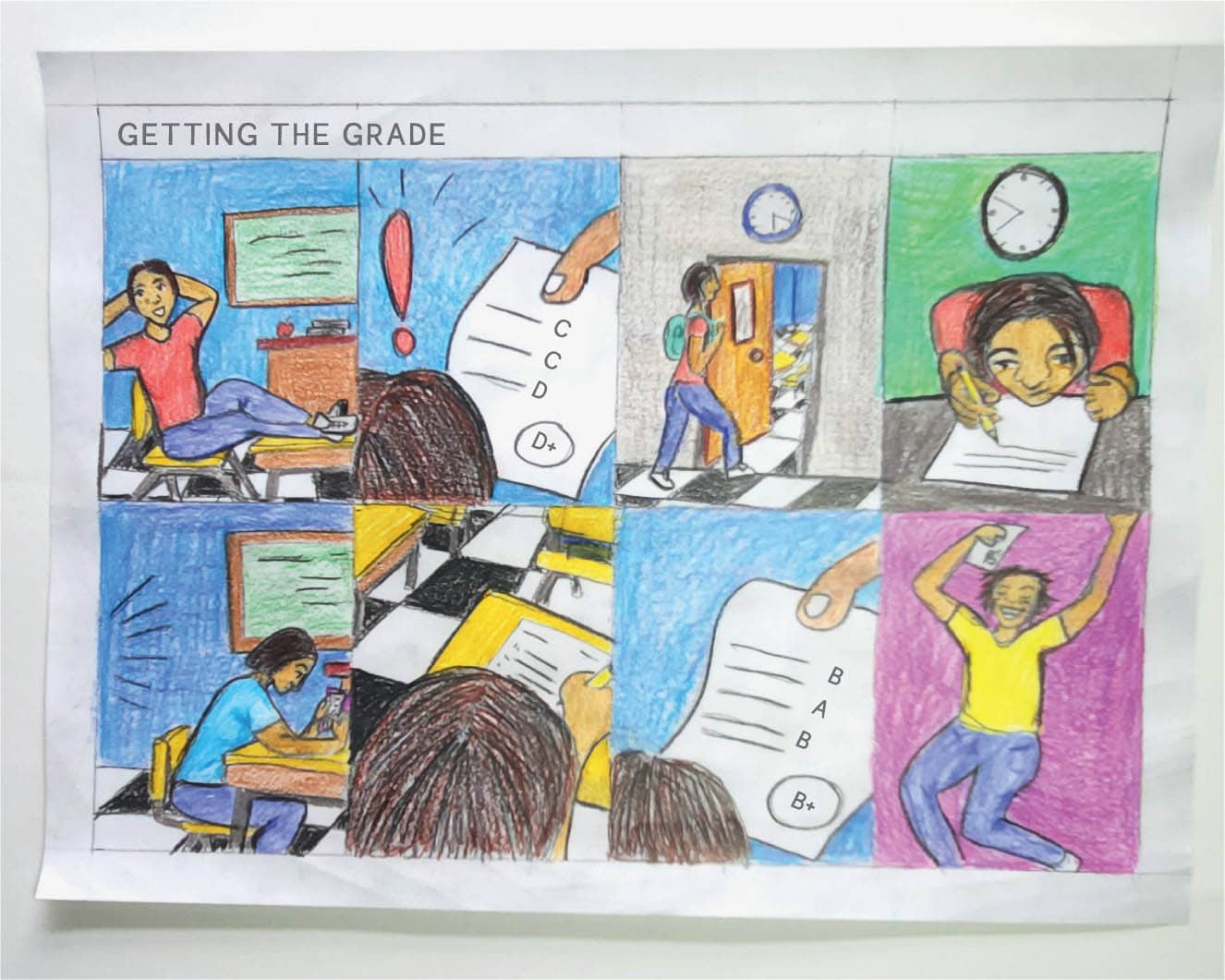

MATERIALS
IN THIS ACTIVITY, YOU WILL

WHY THIS MATTERS
LET’S GET STARTED!
create a self-portrait that challenges stereotypes. Our understanding of people can be influenced by how they are represented in the media, which often includes stereotypes. A stereotype, which is often false and oversimplified, places a label on groups of people. Stereotypes do not recognize that every person has their own experiences that shape their identity. Creating artwork that directly challenges these stereotypes is one way we can make a change in our society and demonstrate people are complex individuals. 1. Have you ever been stereotyped? Think about a time when someone assumed something about you without knowing you. What assumption did they make? How did you feel? What do you wish that person knew about you? 2. For this project, you will create a self-portrait about your lived experiences. Think about the following: What matters most about your identity? What experiences have shaped your identity? What do you love about yourself? What makes you feel empowered or powerful? 3. Use a photo to help you draw yourself on your watercolor paper. You can draw yourself from observation or use the printed photo and follow the process for transferring an image on this page. Fig. 1 Fig. 1: Use a photograph to draw a portrait. 4. Think about the reflection questions from steps 1 and 2. How can you communicate your answers through your portrait? Fig. 2 Fig. 2: Add details to your portrait and background. For my portrait, I wanted to show that as an Indian woman, I could have shorter hair and use my voice to stand up for what I believe in. Traditionally Indian women wear their hair long. Some women rarely cut it, growing it so long it touches the ground. I included a black hoodie, which is a common symbol in the fight for racial justice, calling attention to racial profiling. The pattern in the background includes a raised fist, which is a symbol of racial unity and power. These elements show my belief that all people are valued and allowed to have a voice. 5. Use paint to add color to your portrait. See Activity 4: Our Many Shades of Skin on this page. Fig. 3 Fig. 3: Paint your portrait. 6. Think about the best way to share or display your artwork to impact the community. Consider sharing it on social media, displaying it in the community, or entering it into an art contest. When we use our art to show the complexities of people, their experience, and their identity, we challenge the stereotypes shown in the media and teach our communities to value and see every person as an individual. Fig. 4 Fig. 4: Share your artwork.POWERFUL PORTRAITS


MATERIALS
IN THIS ACTIVITY, YOU WILL

WHY THIS MATTERS
LET’S GET STARTED!
